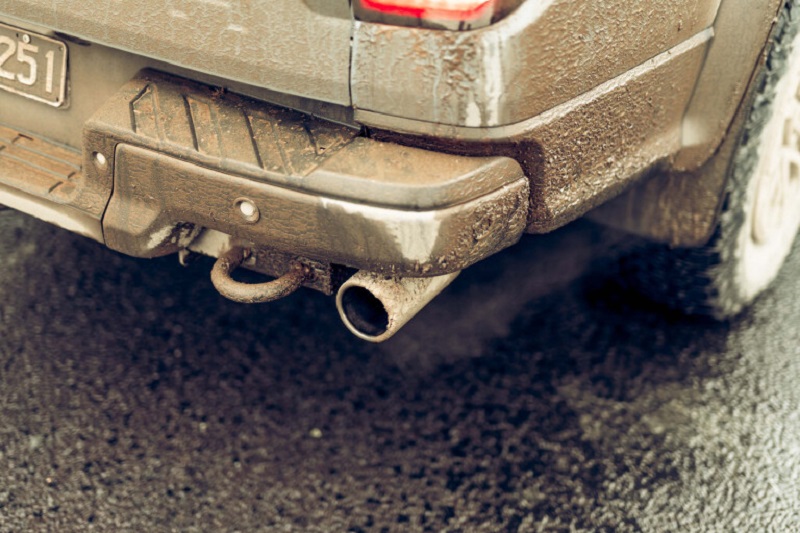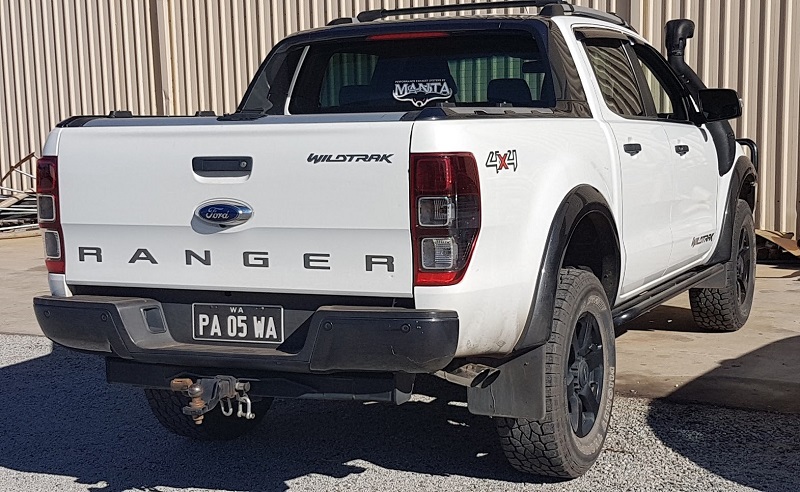The Ford Ranger has toppled the Toyota Hilux to become Australia’s best-selling car. The ute has proven extremely capable both on and off-road, comes with a range of frugal yet gutsy diesel engines, and is available with a long list of standard gear and accessories and additions to enhance its appeal. One such item is an aftermarket exhaust. This opens up the engine, brings in a few more horsepower, and adds more push and shove when you need it.
Shortcomings of Stock Exhausts

Car makers cut corners to keep prices down, and the exhaust as something you don’t see, is a prime example. The build and materials are adequate at most, but for the diesel engines in the Ranger, they fall short in a few key areas. The crush-bent mild steel fails when faced with higher engine and exhaust gas temperatures and pressure, exacerbated by the narrow tubing with multiple bends to fit the underbody. The design has knock-on effects on performance, with extreme backpressure preventing gases from escaping the system, and choking the engine. Moreover, your Ranger can cough up smoke in unexpected places due to ruptures when the exhaust is dented or bent in off-roading duty, or corroded from contact with water or mud.
What you lose is performance and durability and results in an exhaust that soon starts to show its age. Going with an aftermarket exhaust system for Ford Ranger deals with all the issues the stock unit has. The good part is Ranger owners can configure the exhaust with parts they like, and also add a dose of style. The beefier sound from the tips is an added bonus.
Why Have an Aftermarket System
Fitting the Ranger with an aftermarket exhaust brings the ute a whole lot of benefits:
- More power – better and faster exhaust flow with straighter and wider tubing eases combustion, essentially increasing horsepower. Estimates are roughly 10 percent of added power, or 25hp in the 3-litre turbo in the top-tier new car.
- Less engine and parts stress – increases in backpressure can hurt manifolds and internals, and also compromise the work of the turbos. Aftermarket systems significantly reduce backpressure, and also help to relieve the engine of spent gases in what is known as exhaust scavenging.
- Durability – better materials, thicker exhaust walls and advanced production processes result in Ranger exhaust systems that are meant to last, regardless of how or where you drive.
- Sound options – new exhausts are also hampered by current noise and emissions regulations, resulting in a tamed and subdued exhaust note. Individual parts like mufflers and resonators can be modified to deliver a deeper, throatier and louder sound, or adversely, reduce excess sound or droning in older Rangers.
- Customisation – owners can swap out all of the tubing or specified parts, considering exhausts are modular designs, with several parts bolting to each other. You can choose to add parts that improve exhaust flow and sound, or parts that improve overall build.
- Style – customisation also means adding parts that not only last longer, but also look better. Here exhaust tips in varying designs, widths and materials are the go-to choice for singling out your ute from the crowd.
Choosing What’s Right

Local builders have stepped up their aftermarket parts and accessory range, specifically for top-selling brands. When considering an exhaust system for Ford Ranger, look at the range of materials, build level, tubing widths, and a system that is compatible with the engine in your Ranger.
High-grade, treated stainless steel is the entry point to better performance and a system that handles more heat, pressure and impact. This is much stronger than the mild steel found in stock variants, and undergoes mandrel bending, a manufacturing process that strengthens the tubing and keeps it to uniform widths. Buyers can save a few dollars by opting for aluminised mufflers, essentially an aluminium coating on mild steel, but the savings don’t add up for off-roading or demanding work tasks, as the thin aluminium layer will erode and leave the metal exposed.
Anyone with more cash can also choose harder and stronger materials. Titanium exhausts are much lighter, have over 50 percent more strength than stainless steel, better resist corrosion and extreme heat due to the higher melting point, and just look much better. The price difference though may not justify the benefits, being at least 3 times more than comparable steel systems. Changing out the tips though is a more affordable option, with carbon fibre, titanium, treated steel or Inconel being the favourite materials.
Going with wider piping is almost a given. Aftermarket exhausts are at least half an inch wider over stock, and the extra space speeds up exhaust flow and improves performance. 3-inch tubes are the most common types, but you can also find 3.5 inch varieties, specifically with the bigger 6-cylinder engines.
This leads to compatibility. The Ranger has had a number of diesel engines in current and past models, differing in capacity, cylinder count and whether they are turbocharged or aspirated. Retailers and manufacturers make buying easier, listing which exhaust matches which engine. They also take into account installation, providing the necessary hardware, and a design that doesn’t require any changes to the underbody for a snug fit.
Lastly, choose complete systems, such as turbo-back types for the most power gains, or axle-back or DPF-back systems for improved flow, better sound, and longevity. Buyers are also offered a wide selection of separate parts, like high-flow catalytic converters or straight tubes to improve performance in sectors along the tubing found wanting.